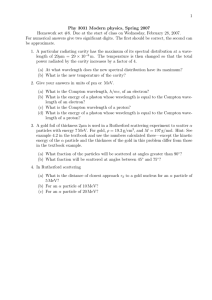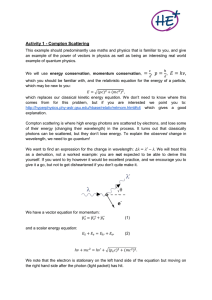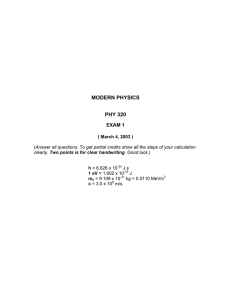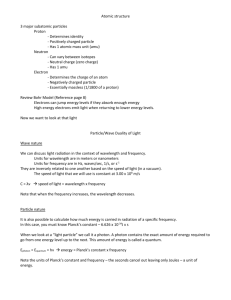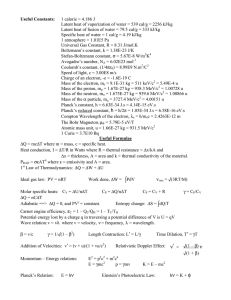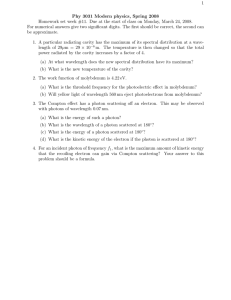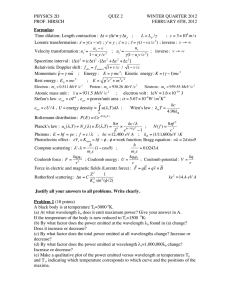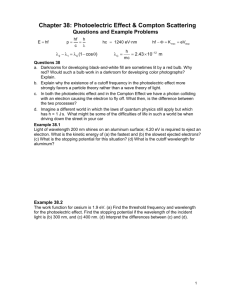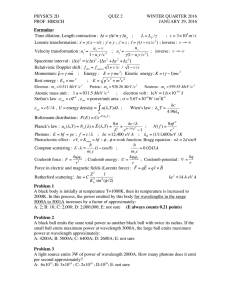1 Phy 3031 Modern physics, Spring 2008
advertisement
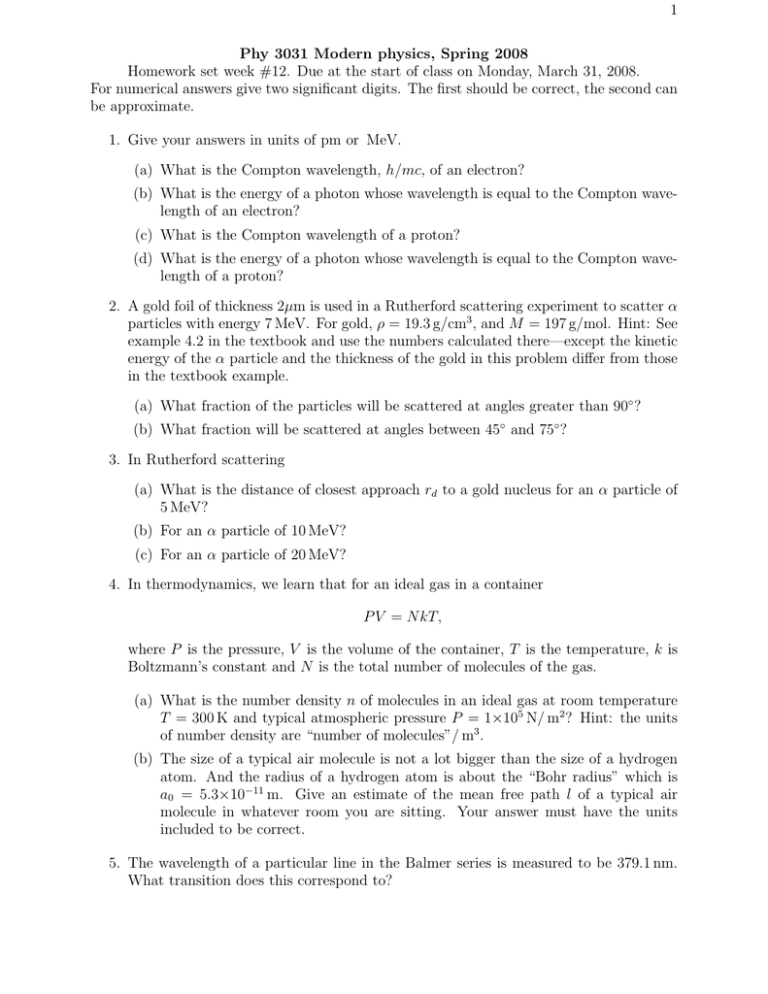
1 Phy 3031 Modern physics, Spring 2008 Homework set week #12. Due at the start of class on Monday, March 31, 2008. For numerical answers give two significant digits. The first should be correct, the second can be approximate. 1. Give your answers in units of pm or MeV. (a) What is the Compton wavelength, h/mc, of an electron? (b) What is the energy of a photon whose wavelength is equal to the Compton wavelength of an electron? (c) What is the Compton wavelength of a proton? (d) What is the energy of a photon whose wavelength is equal to the Compton wavelength of a proton? 2. A gold foil of thickness 2µm is used in a Rutherford scattering experiment to scatter α particles with energy 7 MeV. For gold, ρ = 19.3 g/cm3 , and M = 197 g/mol. Hint: See example 4.2 in the textbook and use the numbers calculated there—except the kinetic energy of the α particle and the thickness of the gold in this problem differ from those in the textbook example. (a) What fraction of the particles will be scattered at angles greater than 90◦ ? (b) What fraction will be scattered at angles between 45◦ and 75◦ ? 3. In Rutherford scattering (a) What is the distance of closest approach rd to a gold nucleus for an α particle of 5 MeV? (b) For an α particle of 10 MeV? (c) For an α particle of 20 MeV? 4. In thermodynamics, we learn that for an ideal gas in a container P V = N kT, where P is the pressure, V is the volume of the container, T is the temperature, k is Boltzmann’s constant and N is the total number of molecules of the gas. (a) What is the number density n of molecules in an ideal gas at room temperature T = 300 K and typical atmospheric pressure P = 1×105 N/ m2 ? Hint: the units of number density are “number of molecules”/ m3 . (b) The size of a typical air molecule is not a lot bigger than the size of a hydrogen atom. And the radius of a hydrogen atom is about the “Bohr radius” which is a0 = 5.3×10−11 m. Give an estimate of the mean free path l of a typical air molecule in whatever room you are sitting. Your answer must have the units included to be correct. 5. The wavelength of a particular line in the Balmer series is measured to be 379.1 nm. What transition does this correspond to?
